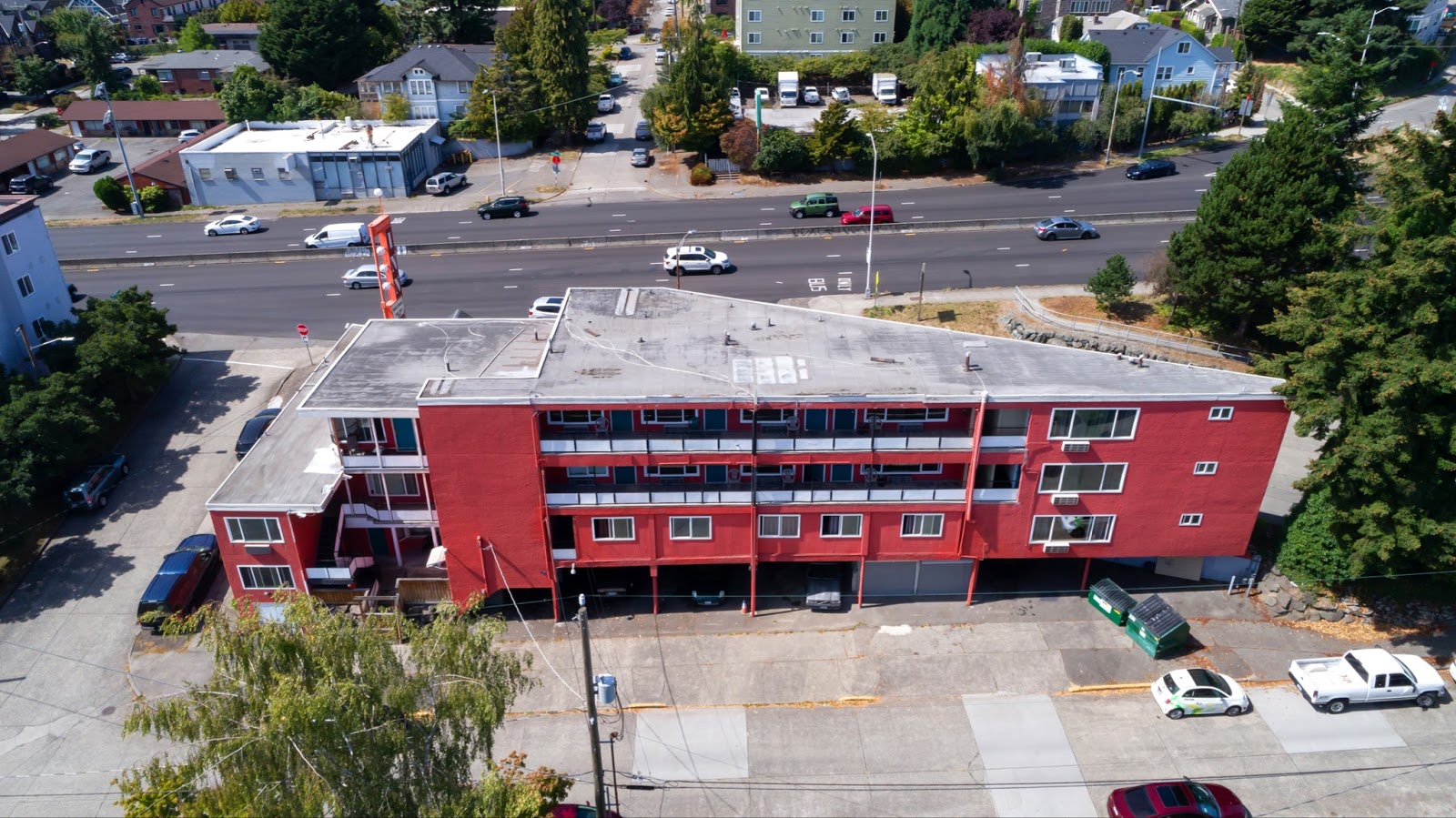The COVID-19 pandemic has left an indelible mark on Seattle’s hospitality industry, with demand for hotel space evaporating just weeks into the pandemic. For Wallingford X, the ownership of the Wallingford Inn, a 20-key hotel which has been located in Seattle, the last year has been quite the ride. Despite adverse economic conditions, the Wallingford Inn was transformed from a dilapidated asset to a fully-functional hospitality property that has even given big name hotels a run for their money in recent months.
“It has been an interesting year…to consider the feasibility of a hospitality project,” explained GIS Companies Group’s Chief Executive Officer Eugene Gershman. GIS, with its experience in the Puget Sound commercial real estate market, has been hired as a consultant to help with the repositioning of the asset. “We had to look at all of these different aspects. Is hospitality still the right use? Should we consider other potentials?”
Wallingford X purchased the hotel for $2.1 million in March of 2020 and took ownership the same day the pandemic was declared. By the beginning of April, some submarkets within the Seattle metro were recording occupancy in the single digits, according to a report released by Kidder Mathews. Many hotels shuttered, and those that did remain open managed to scrape by at the expense of reduced services and furloughed staff. “There are no words that adequately convey the devastating impact of the 2020 pandemic on the local lodging market,” notes Kidder Mathews. “The shock to the industry was not merely unanticipated or unprecedented.
It was unimaginable.” Across the Puget Sound, the hospitality sector recorded a 45 percent decrease in occupancy, a 20 percent decrease in average room rate and a 56 percent decline in daily revenue per available room, making 2020 the worst year on record for local hotels. When Wallingford X bought the Wallingford Inn, the asset was reflective of not just the current market conditions, but decades of deferred maintenance. Originally built in 1905, the inn had been expanded twice: once in the forties, and then again in the 1980s. Previous ownership had owned the hotel since 1985, and few updates had been made to the property since.
In March of 2020, 40 percent of the rooms were offline, and ownership had to figure out what to do next. “Whatever they were thinking before then and whatever our plan was, literally got thrown into a blender,” GIS Principal Ryan Grams. Originally, Wallingford X and GIS intended to shut the hotel down and move “warp speed” ahead with redevelopment. However, with the pandemic impacting the viability of hospitality assets and other commercial properties in the area, plans changed. “The first thing that we had to do is consider whether this building could stay as a hotel…and what rents it could charge,” added Gershman. “Even if we completely renovated it and brought it to industry standards…could this building afford to charge the same rates as other hotels and still be competitive? Well, all of the sudden, those benchmarks disappeared.
Travel had been suspended for weeks and large hotels in the city had shut down.” Grams and Gershman added that at one point, hotels up the street were charging less than $100 per night and barely scraping by. Ultimately, the project team’s first priority was ensuring the safety of the hotel’s guests in the future. According to GIS, because the building was so old, the project team also needed to sort out whether the property was historically significant and how best to proceed with repositioning.
The goal, given the pandemic, was to get the building to full occupancy. Renovations were made with that goal in mind, and GIS and Wallingford X made the decision to furnish the rooms in such a way to accommodate long-term stays. All of the units have direct access to the outside, and all hallways are ventilated—a once outdated mode of hotel design that has also come as a boon. The strategy worked. While other hotels continued to struggle, Wallingford Inn managed to flourish. Now, with 100 percent occupancy and a steady stream of customers in hand, GIS and Wallingford X are determining what development potential the site has in the future.
There are a number of options on the table, including expanding the hotel to around 100 rooms, or converting the asset into a multifamily property. “We are still working on it,” said Gershman. “…As it turns out, the market has changed quite dramatically.” Ownership’s decision on how to proceed with the asset is occurring in live time and will also in part depend on its other holdings in Seattle. According to GIS, Wallingford X is actively pursuing a number of acquisitions, and is hoping to add another 100 doors to its hotel portfolio in the coming year. Regardless, it is clear that the Wallingford Inn is on the up and up, and the GIS and Wallingford X could have a new business model on their hands. “This is the first of what we’re hoping will be several projects in the near term with this group,” said Grams. “There’s an awful lot of buildings we can target that are just like this.”
Written by – Meghan Hall

